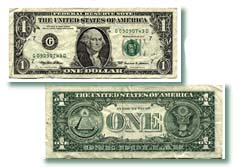|
|
Words
from Milton Friedman, Forbes Magazine, on the stability of the Panamanian
Balboa:
Three types
of exchange rate regimes are possible and have existed at various times
in various countries.
The clearest
example is a common currency: the dollar in the U.S.; the euro that will
shortly reign [throughout] in the common market. Almost identical is the
balboa in Panama, which is interchangeable with the dollar one-to-one,
and the currency boards in Argentina and Hong Kong, which are committed
to creating currency only in exchange for a specified amount of U.S. dollars
(one peso to $1 in Argentina, 7.8 Hong Kong dollars to $1) and to keeping
dollar reserves equal to the dollar value of all currency outstanding.
A pure gold standard is a variant of this type of regime.
The key feature
of the currency board is that there is only one central bank with the power
to create money—in the examples cited, it's the U.S. Federal Reserve System.
Hong Kong has no central bank; Argentina does—but without the power to
create money.
Hong Kong and
Argentina have retained the option of terminating their currency boards,
changing the exchange rate, or introducing central bank features, as the
Hong Kong Monetary Authority has done in a limited way. As a result, they
are not immune to infection from foreign exchange crises originating elsewhere.
Nonetheless, currency boards have a good record of surviving such crises
intact. Those options are not retained by Panama, and will not be retained
by the countries that adopt the euro as their sole currency. |



